Welcome to the world where rainy days no longer mean dreary work conditions. This is the reality of the modern construction sector, where cutting-edge rain gear is changing the game for professionals braving the weather. Our focus today is on how this substantial shift is taking the rainwear for construction workers from being just waterproof clothing to something far more advanced. With technological innovations and changing consumer trends, the future of rain gear is not just about protection—it's a blend of comfort, durability, and style. Let's dive in and explore the exciting evolution and potential future of rainwear in the construction industry.
Current Status of Global Rainwear Market
The rainwear market, often considered as a niche segment in the global apparel industry, has been witnessing an impressive sales surge in recent years. It has grown from being a purely functional collection of products to a trendy fashion statement, redefining style even in wet weather. With new technologies and fabrics contributing to the sector's steady growth.
Market Value in 2022
As of 2022, the global rainwear market has reached stellar heights, with its size valued at an astounding USD 3864.7 million. This growth is attributed to a host of factors. The most significant aspects include an increase in outdoor activities and a rising emphasis on rainwear products that offer both functionality and fashion appeal. Today, rainwear isn't just for monsoon; its sales continue you to soar throughout the year due to its position as a trendy fashion accessory.
Forecasted Market Growth
But hold your umbrellas, the market is meteoric in growth. Over the next five years, the global rainwear market is expected to register a compound annual growth rate (CAGR) of 5.5% from 2023. Following this growth trajectory, the market size is anticipated to touch $1.5 billion by 2028, advancing at a market growth of 5.9 % CAGR during the forecast period.
This forecasted growth is supported by the rising consumer awareness about the importance of grooming and personal appearance in developing countries, combined with economic development and higher disposable incomes. Therefore, the future of the rainwear market looks promising and filled with opportunities for both existing players and new entrants.
This market is no longer just rain checks; it's a downpour of opportunities! Join in, and make the most of this growing market trend.
Current Trends in Rain Gear
In the ever-evolving world of fashion and practical apparel, rain gear has carved out a niche for itself that's not just about protection from the elements anymore. It's about style, multi-season versatility, and high-tech functionality. With trends shifting towards dual jackets and hoodies, demand from a diverse array of consumers, and the integration of smart technologies, rain gear is continually reinventing itself to meet and exceed the expectations of its users.
Popularity of Dual Jackets and Hoodies
In recent years, there's been a noticeable surge in the popularity of dual jackets and hoodies designed for both summer and rainy seasons. These items have hit the sweet spot between practicality and fashion, offering wearers the perfect blend of comfort, protection, and style. They’re lightweight for comfort during warmer months, yet also provide the necessary protection during rainy periods.
What distinguishes these dual jackets and hoodies from traditional ones are features like:
- Waterproof or water-resistant materials
- Breathable fabrics for comfort in warm weather
- Fashion-forward designs that don’t compromise on functionality
These qualities make the dual-purpose jackets and hoodies popular choices for those who want to stay stylish and dry during the unpredictable weather conditions in spring and fall.
Demand by Young People, Athletes, Bikers, and Professionals
Rain gear is not merely a one-size-fits-all market, but rather a diverse product range catering to specific groups of customers. Young people, athletes, bikers, and working professionals are among the subsets driving demand, each with unique product requirements.
- Young individuals are gravitating towards trendy, fashionable designs
- Athletes look for performance rain gear that provides weather protection but doesn’t hinder activity
- Bikers require sturdy, high-visibility gear that provides optimal protection at high speeds
- Professionals in various fields need reliable gear that maintains a professional image, such as the forthcoming Rain Gear Trends 2023 in the construction industry
These diverse demands are encouraging manufacturers to innovate and diversify their offerings, resulting in a wider range of specialized products.
Incorporation of Smart Technologies in Rain Gear
The integration of technology into clothing is not a new concept. However, its application in rain gear brings about a whole new level of functionality and convenience. One of the most exciting trends is the inclusion of smart technologies in rain gear, such as built-in GPS tracking and activity monitoring.
These high-tech features are transforming rain gear from simple protection against the elements into functional accessories integrated with our digital lives. GPS tracking can help locate a lost umbrella or ensure safety while participating in outdoor activities, and activity tracking embedded into your jacket can keep track of your physical outings.
Current trends in rain gear are showing us that this sector of the fashion and apparel industry is about more than just shielding us from the rain. It's about blending style, technological innovation, and the specific needs of various consumer segments into practical and fashionable clothing options. As these trends continue to evolve, we can look forward to rain gear that doesn't just keep us dry but also adds value to our lives in creative and innovative ways.
Material and Design Innovations in Rain Gear
The world of rain gear is evolving at a rapid pace, with the advent of new materials and designs redefining the rainwear landscape. Thanks to the ingenuity of manufacturers and the ceaseless demands of consumers, comfort and durability have become paramount in modern rain gear design. Here, we're going to discuss the most popular materials and the latest innovative technologies used in the production of rain gear.
Popular Materials
So what are the fabrics that are holding their own in this high-stakes industry? Let's delve a little deeper:
- Nylon and Polyester: Soft, lightweight, and offering impressive resistance to weather, nylon and polyester have become the go-to materials for many rain gear manufacturers. Breathable nylon and polyester, in particular, minimize the potential for sweat accumulation during strenuous outdoor activity, effectively heightening comfort.
- Moisture-Wicking Fabrics: This technology draws moisture away from the body and towards the surface of the material, where it can evaporate quickly. Moisture-wicking fabrics work wonders in enhancing comfort and maintaining dryness, irrespective of the weather conditions.
- New Blends: Companies are now experimenting with new fabric blends, aiming to make them softer and more durable. These novel blends promise to bring a whole new experience of comfort and longevity to rain gear users.
Innovative Technologies
The industry is not just stopping at materials - innovative technologies are consistently being integrated into the design and manufacturing process. Among these are:
- High Visibility Jackets: Safety, especially in low-light or foggy conditions, is a prime concern in the rain gear industry. Addressing this need, many brands are offering high visibility jackets that ensure the wearer can be easily spotted.
- Flame Resistant Gear: An innovative solution geared towards outdoor workers and adventurers, flame-resistant gear provides an added layer of protection against potential fire hazards.
- Durable 4-Way Stretch Membranes: A new entrant to the field, durable 4-way stretch membrane technology promises superior flexibility without compromising on durability. These membranes enhance the wearability and functionality of rain gear, especially for those engaged in heavy-duty outdoor activity.
In summary, rain gear has far surpassed its primary function of offering protection against the rain. Current trends and advancements extend towards comfort, durability, and even safety. Want to learn more about the latest innovations in the rain gear industry? Check out our article on the Latest Rain Gear Innovations for an even deeper dive into this fascinating subject.
Notable Players in Rainwear Market
As we dive into our analysis of the rainwear market, we can't help but notice the vibrant kaleidoscope of brands that dominate this space. Whether it's a major global player or a local producer, each has its unique appeal and contributing dynamics to this market's complex composition. The global market for rainwear is highly fragmented, with the presence of both local and international players adding to the market's competitive landscape.
Local Producers vs Major Players
Local producers and major players each hold unique roles in shaping the rainwear market. A local producer's strength lies in its understanding and cater to specific regional demands. However, major players rise to the top with their significant brand presence, vast distribution networks, and their ability to invest in research and development for innovative products.
For instance, in the realm of construction, rain gear is a necessity, not just a luxury. Our roundup of the Top Rain Gear Brands emphasizes the diversity present in the rainwear market, from well-established brands to emerging industry game-changers. This painted picture clearly showcases the interplay between local craftsmen and major multi-national outfits battling it out in the market.
Influence of Climate Conditions, Consumer Preferences, and Technological Advancements
As we steer into consumer dynamics, the notable influencers bolstering rainwear market growth include climate conditions, customer preferences, and advancements in fabric technology - a trifecta as it were.
Climate conditions inherently drive the demand for rainwear in regions experiencing high rainfall and unpredictable weather patterns. As a result, residents often seek all-weather solutions that provide not only protection but also comfort.
Consumer preferences, on the other hand, tilt towards brands that offer value, quality, and variety. Today's choosy consumers desire rainwear that complements their style, offering a blend of functionality and aesthetic appeal. This demand pattern compels brands to launch trendy, state-of-the-art rainwear collections that align with modern consumer tastes.
Last but far from least, advancements in fabric technology have ushered in a novel dimension of highly consumer-centric products. Waterproofing, breathability, and comfort are no longer optional add-ons; instead, they're foundational necessities in any modern rainwear product. Innovation in fabric technology allows brands to produce high-performance rainwear that stands the test of time and the elements - pacifying consumers and the weather in one fell swoop.
So, whether it's local manufacturers weaving magic with local materials or global brands leveraging cutting edge technology, each player's unique contribution shapes the realm of rainwear into the thriving market we see today. Agreed, this market might be densely populated, but one thing is clear: when it comes to keeping dry, consumers have an ocean of choices.
Future Directions for the Rain Gear
The future direction of rain gear looks exciting, promising increased functionality, decreased weight, and enhanced performance. With advancements in technology, the rainwear industry continually innovates to keep up with the shifting needs and expectations of customers. Offering practical, efficient, and stylish solutions against the elements are central to their commitment. But where are these ventures with these valuable features taking us specifically?Improving Functionality
First and foremost, an exciting area of focus for future rain gear is the improvement in functionality. Trend-setting manufacturers are hard at work creating clothing that not only protects you from the rain but also provides additional benefits to the wearer. From intelligent fabric coatings that react to changing weather conditions, to built-in ventilation systems that regulate temperature and maintain comfort, the future of rain gear is not just about staying dry. It's about seamlessly incorporating functionality into the user's lifestyle.- New rain gear would respond to weather changes
- Ventilation systems to regulate temperature
- Incorporation of digital technology for added functionality
Reducing Weight and Enhancing Key Characteristics
In addition to functionality, reducing the weight of rain gear without sacrificing durability or weather protection is another key focus for the future. The goal is to create ultra-lightweight, yet robust material that doesn't inhibit motion and ensures the user's comfort during movement. Emphasis on sustainability also shapes the future of rain gear. Eco-friendly materials and ethical manufacturing processes will become increasingly common. Not only will the gear be lighter and more functional, but it will also contribute minimally to environmental damage.| Characteristic | Description |
|---|---|
| Weight | Ultra-lightweight material for unrestricted movement |
| Durability | Robust materials designed for durability |
| Sustainability | Environmentally friendly, ethical production processes |
Conclusion
In the landscape of the global rainwear market, one thing remains clear: innovation and durability are the key factors that drive growth. With leading-edge technologies and premium materials being introduced daily, the future of rain gear looks promising. Companies are ratcheting up efforts to push the boundaries of what is possible in rainwear. From lighter designs to increased wearability, there's no denying the constant evolution taking place.
In this context, Hurricane Raingear, with its unwavering commitment to crafting durable and comfortable rainwear, stands as a trustworthy player. As a trusted provider of premium quality rain gear developed with cutting-edge technologies, we continue to uphold our promise: delivering only the best to our customers.
As we look to the future, we see a world that will rely increasingly on quality rain gear. We're excited to be part of this journey, and we're committed to providing you with the best rain gear on the market, helping you stay dry and comfortable no matter what the weather throws your way.
Remember, the quality of the rain gear you opt for can make all the difference. When it's about battling the elements, don't settle for less. Go for the tried, the tested, and the absolutely dependable - that's where Hurricane Raingear comes in. As the rain gear industry continues to evolve, stay covered with the brilliance of great design and utmost functionality that Hurricane Raingear brings to the table. Not just a trend, but the essence of true service and high value – that's our pledge to you, today and always.
Frequently Asked Questions
-
What are the top rain gear materials used in construction?
The top rain gear materials used in construction are PVC (Polyvinyl Chloride), PU (Polyurethane), and Gore-Tex. These materials offer durability, waterproofing, and breathability to keep workers dry and comfortable.
-
What are the key features to look for in rain gear for construction?
When choosing rain gear for construction, it is essential to look for features like waterproofness, breathability, durability, reinforced seams, adjustable cuffs and hems, reflective details for visibility, and functional pockets for storage.
-
Are there any eco-friendly rain gear options available for construction workers?
Yes, there are eco-friendly rain gear options available for construction workers. Some manufacturers produce rain gear made from recycled materials or sustainable fabrics like recycled polyester and organic cotton.
-
How often should rain gear in construction be replaced?
The lifespan of rain gear in construction depends on various factors such as usage frequency, quality of materials, and maintenance. On average, rain gear should be replaced every 1-2 years or when it starts to show signs of wear and tear.
-
Can rain gear be customized with company logos and branding for construction workers?
Yes, many rain gear manufacturers offer customization options such as adding company logos and branding. This can help promote brand awareness and create a professional look for construction workers.



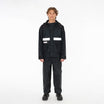



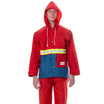


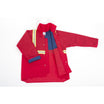

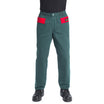



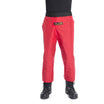






Leave a comment
This site is protected by hCaptcha and the hCaptcha Privacy Policy and Terms of Service apply.